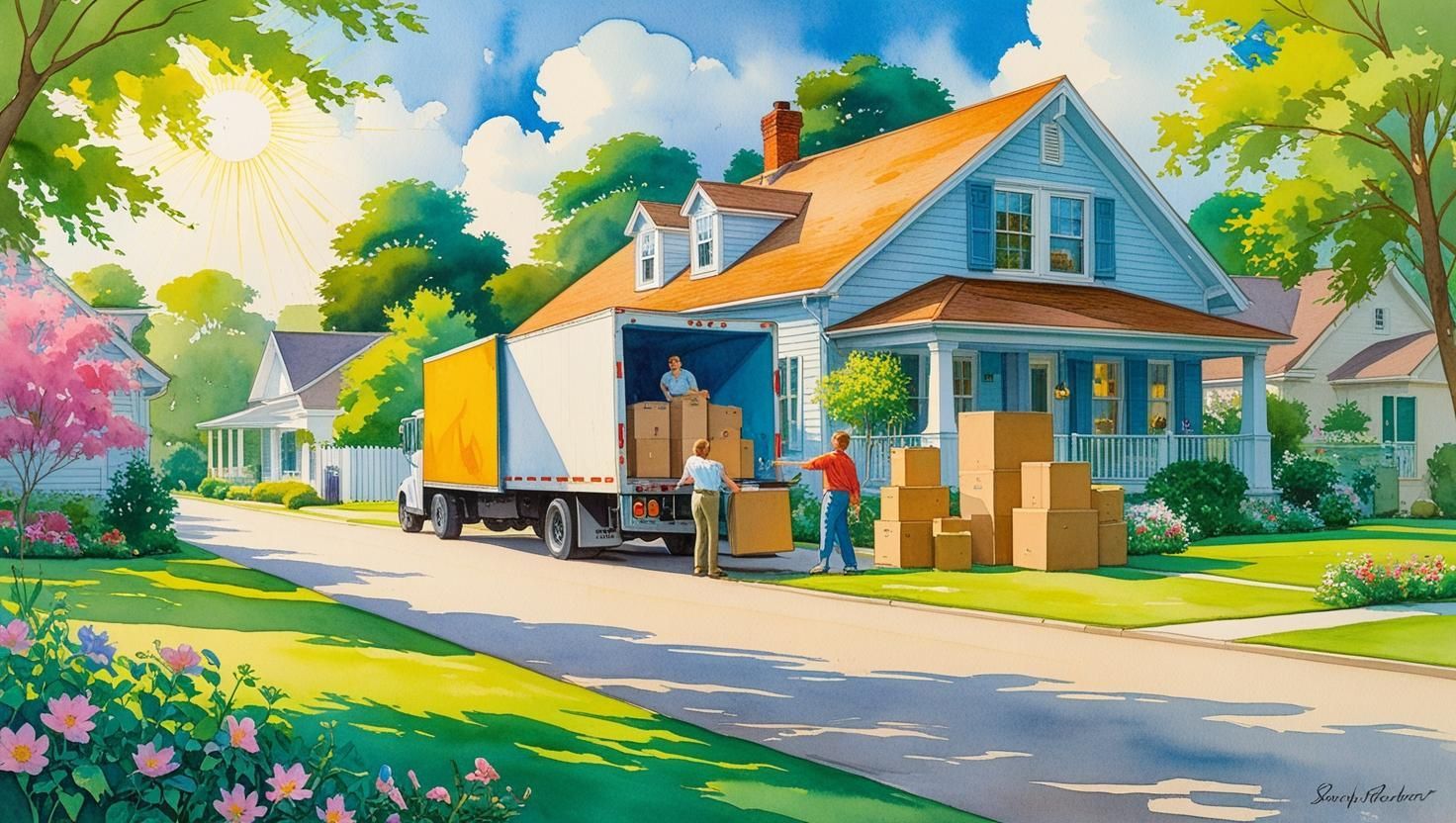How to Pack a Storage Unit: Smart Tips for Maximizing Space and Protecting Your Belongings
Packing a storage unit isn’t just about stacking boxes until the door closes. The way you organize things inside can make a big difference in how safe your items stay and how easy it is to find what you need later.
Whether you’re moving, decluttering, or in between homes, learning how to pack efficiently can save time, money, and frustration. If you’re preparing for a move to the area, our Moving to Glenpool guide offers helpful insights on neighborhoods, housing, and local tips to make your transition smoother.
If you’re planning to rent from Glenpool Storage, these practical tips will help you use your space wisely and keep your belongings protected.
Why Packing Your Storage Unit Properly Matters
A well-packed storage unit protects your belongings, helps you fit more into your space, and makes future access simpler. Without a plan, it’s easy for things to get damaged or lost.
Prevent Damage and Save Money
When boxes are stacked unevenly or fragile items aren’t wrapped correctly, they can break under pressure. Using the right materials and techniques reduces the chance of damage and helps you avoid paying to replace valuables later.
Make the Most of Your Unit’s Space
A strategic layout can make even a small unit hold more than you’d expect. Proper stacking and organizing help you get the best use out of every corner and reduce how much space you actually need.
Keep Items Accessible and Organized
If you label boxes and plan an aisle down the middle, you’ll never have to unpack the entire unit just to find one item. Organization saves time and keeps the process stress-free.
Step 1: Plan Your Storage Layout
Before you load anything, take a moment to think through your plan. It’s easier to make adjustments now than after everything is inside.
Measure the Unit and Your Items
Knowing the size of your unit and your biggest items helps you figure out where each piece should go. It also ensures nothing gets crammed or damaged during the move-in.
Place Heaviest Items on the Bottom
Always start with the bulkiest or heaviest things first, appliances, furniture, or large boxes. This creates a stable base that prevents lighter boxes from being crushed.
Leave a Center Aisle for Access
A small walkway through the middle of your unit lets you move around and reach things in the back easily. It’s a simple trick that makes long-term storage much more convenient.
Step 2: Gather the Right Packing Supplies
Quality supplies make a difference. Cheap boxes or tape may save a few dollars upfront, but they can fail when stacked.
Use Quality Boxes and Containers
Choose sturdy boxes or bins that can handle being stacked. Avoid boxes that are damp, soft, or torn; they can collapse under weight.
Label Everything Clearly
Write what’s inside on multiple sides of each box. It’s best to include details like “Kitchen – Glassware” instead of just “Kitchen.”
Use Plastic Bins Instead of Cardboard
Plastic containers last longer and resist moisture better than cardboard. They’re especially good for long-term storage or damp climates.
Have Bubble Wrap, Tape, and Moving Blankets Ready
These materials protect fragile or valuable items. For advice on safe packing materials, the Consumer Product Safety Commission provides helpful storage and safety guidelines.
Step 3: Disassemble and Prepare Furniture
Large items take up less space when broken down. Taking furniture apart also prevents damage during transport and storage.
Remove Table Legs and Shelves
Disassemble what you can. Keep screws and bolts in small labeled bags and tape them to the matching piece.
Wrap Furniture to Prevent Scratches
Cover wood and metal pieces with blankets, plastic wrap, or moving pads to prevent dents and scuffs.
Store Mattresses and Sofas Vertically
Standing these items upright saves space and keeps their shape. Always cover them to avoid dust buildup.
Step 4: Use Vertical Space Wisely
Stacking items properly helps you fit more while keeping your unit safe and organized.
Stack Heavy Boxes at the Bottom
Build your base with heavy, sturdy boxes or bins. Make sure they’re level and stable before adding lighter boxes on top.
Store Lighter Items Higher Up
Use smaller or lighter boxes on upper levels. Avoid piling fragile boxes near the bottom.
Install Shelving or Racks
If you’re storing long-term, adding shelves is worth it. They help organize smaller items, tools, or décor without stacking everything on top of each other.
Step 5: Organize Items by Category
Sorting your items before moving in saves time later.
Group Similar Belongings
Keep similar items together; books with books, tools with tools, etc. This makes unpacking or finding specific things faster.
Keep Frequently Used Items Near the Front
If you plan to grab something often, like holiday decorations or sports gear, place it near the door for easy access.
Make a Simple Inventory List
Create a list of what’s in each box and where it’s located. Even a quick note on your phone helps you track everything without opening boxes.
Step 6: Protect Fragile and Sensitive Items
Some items need more care than others.
Wrap Breakables Individually
Wrap dishes, glassware, and decorations one by one. Use bubble wrap or packing paper to cushion them.
Use Bubble Wrap and Soft Materials
Blankets and towels can double as padding. They keep delicate items safe while saving on packing materials.
Store Electronics in Climate-Controlled Units
If you’re storing electronics or sensitive equipment, consider a climate-controlled unit. For temperature guidance, Energy.gov has tips on protecting electronics from extreme conditions.
Step 7: Optimize for Climate and Long-Term Storage
If your belongings will stay in storage for several months or through seasonal changes, take a few extra precautions.
Consider Climate-Controlled Storage
Humidity and temperature fluctuations can damage wood, fabrics, and electronics. Climate control keeps conditions stable and prevents mold or warping.
Keep Items Off the Floor Using Pallets or Boards
Elevating your items improves air circulation and helps prevent moisture damage.
Use a Protective Cover for Dust Prevention
Cover larger furniture and boxes with sheets or breathable covers to keep everything clean.
Step 8: Maintain Easy Access and Visibility
Even a well-packed unit becomes a headache if you can’t reach what you need.
Create a Pathway Down the Middle
Leave a narrow walkway from the front to the back so you can move around inside without shifting stacks.
Label Boxes on Multiple Sides
You should be able to read labels no matter which direction you’re facing. This small step saves time later.
Keep an Updated Map of Stored Items
Draw a simple map of where major items are located. You can also color-code boxes or label sections by room.
Common Mistakes to Avoid When Packing a Storage Unit
Avoiding small mistakes can prevent major problems down the road.
- Don’t stack boxes too high or too close to the ceiling.
- Avoid using thin or damaged boxes that can collapse.
- Never store food, plants, or flammable materials.
- Don’t seal items in plastic bags; they trap moisture and cause mildew.
Packing Tips for Specific Items
Furniture and Large Appliances
Clean and dry appliances before storing. Leave refrigerator doors slightly open to prevent odors.
Clothing and Seasonal Gear
Use vacuum-sealed bags or plastic bins to save space and protect against pests.
Important Documents and Photos
Store important papers in sealed plastic containers or document safes. Keep them off the floor to protect from moisture.
Tools and Outdoor Equipment
Clean and oil metal tools before storage. Drain fuel from lawn equipment and power tools to prevent leaks.
Frequently Asked Questions
What should I not put in a storage unit?
Avoid flammable materials, perishables, or anything that could attract pests.
How do I keep my storage unit from getting dusty?
Use covers on large items and don’t store anything loose or open.
How do I make sure my boxes don’t collapse?
Stack evenly, use solid boxes, and avoid overloading them.
Should I use plastic bins or cardboard boxes?
Plastic bins are better for long-term storage. Cardboard works fine for short-term needs in dry environments.
Final Thoughts: Make the Most of Your Storage Space
Packing a storage unit isn’t complicated when you plan ahead and use smart techniques. With a little effort, you’ll save space, keep items protected, and make it easier to find things when you need them. The best results come from organization, sturdy materials, and proper stacking.
For secure, well-maintained storage options near you, visitGlenpool Storage’s website and find the right unit to fit your needs.



